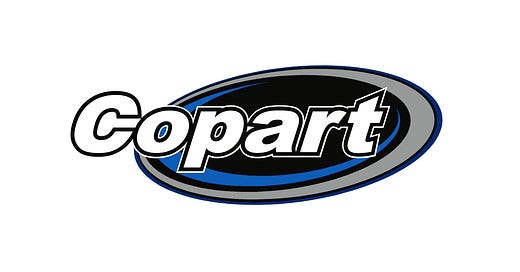Subscribe to AGB - One analysis of a good business every two weeks.
Copart
Copart is not the most complex business but it seems like there’s something new to learn about the company every quarter. Part of that likely has to do with management’s reluctance to divulge KPIs consistently (the latest and only investor presentation available is from April 2016). If you want to get a feel for the history of the company, Willis Johnson’s autobiography “Junk to Gold” is worth a read. Also, this Forbes article from November 2020 has a nice update to what’s going on operationally at the company.
Copart is a leading remarketer of salvaged vehicles in the U.S. and around the world. The company operates a network of salvage yards (10k+ acres) used to store vehicles before they are put up for auction on Copart’s online bidding platform called VB3. According to the company’s website, Copart has 265k+ cars available daily for auction stored at their 200+ salvage yards and sells 3M+ vehicles each year to …



